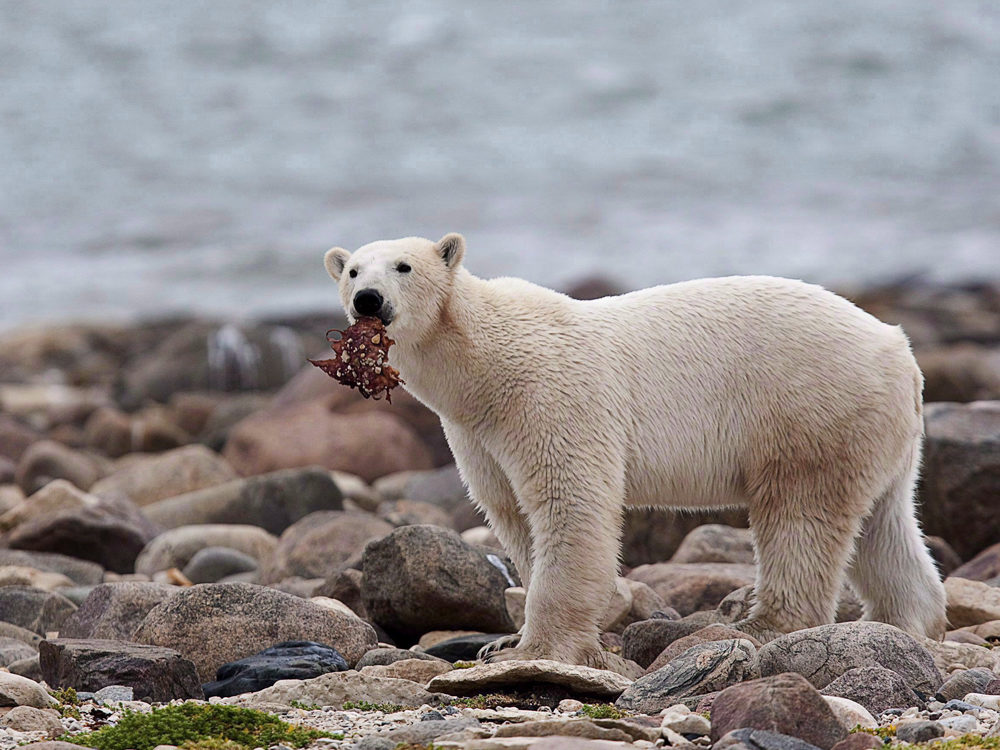Susan Crockford: Polar bears are flourishing, making them phony icons, and false idols, for global warming alarmists

© Sean Kilpatrick/The Canadian PressA polar bear eats a piece of whale meat as it walks along the shore of Hudson Bay near Churchill, Man.
One powerful polar bear fact is slowly rising above the message of looming catastrophe repeated endlessly by the media: More than 15,000 polar bears have not disappeared since 2005. Although the extent of the summer sea ice after 2006 dropped abruptly to levels not expected until 2050, the predicted 67-per-cent decline in polar bear numbers simply didn't happen. Rather, global polar bear numbers have been stable or slightly improved. The polar bear's resilience should have meant the end of its use as a cherished icon of global warming doom, but it didn't. The alarmism is not going away without a struggle.
Part of this struggle involves a scientific clash about transparency in polar bear science. My close examination of recent research has revealed that serious inconsistencies exist within the polar bear literature and between that literature and public statements made by some researchers. For example, Canadian polar bear biologist Ian Stirling learned in the 1970s that spring sea ice in the southern Beaufort Sea periodically gets so thick that seals depart, depriving local polar bears of their prey and causing their numbers to plummet. But that fact, documented in more than a dozen scientific papers, is not discussed today as part of polar bear ecology. In these days of politicized science, neither Stirling nor his colleagues mention in public the devastating effects of thick spring ice in the Beaufort Sea; instead, they imply in recent papers that the starving bears they witnessed are victims of reduced summer sea ice, which they argued depleted the bears' prey. There are also strong indications that thick spring-ice conditions happened again in 2014-16, with the impacts on polar bears being similarly portrayed as effects of global warming.



Comment: See also: Storm Emma leaves hundreds of livestock dead across north-west England